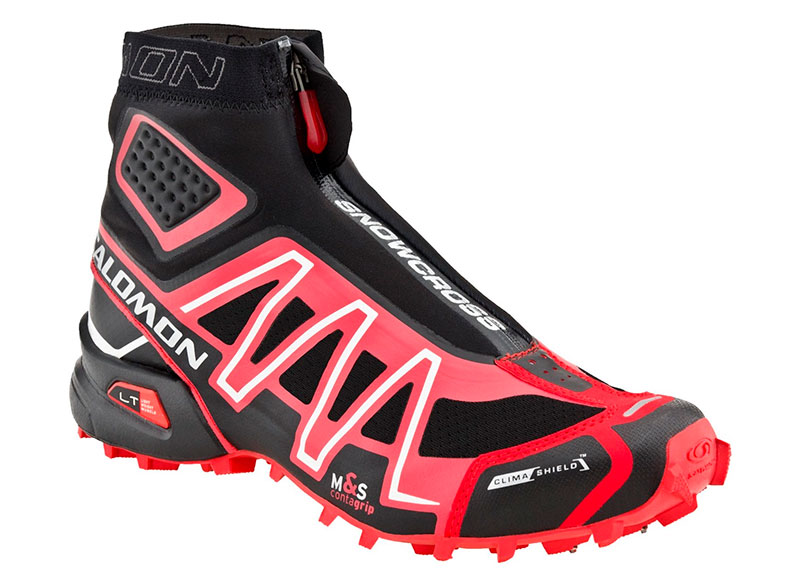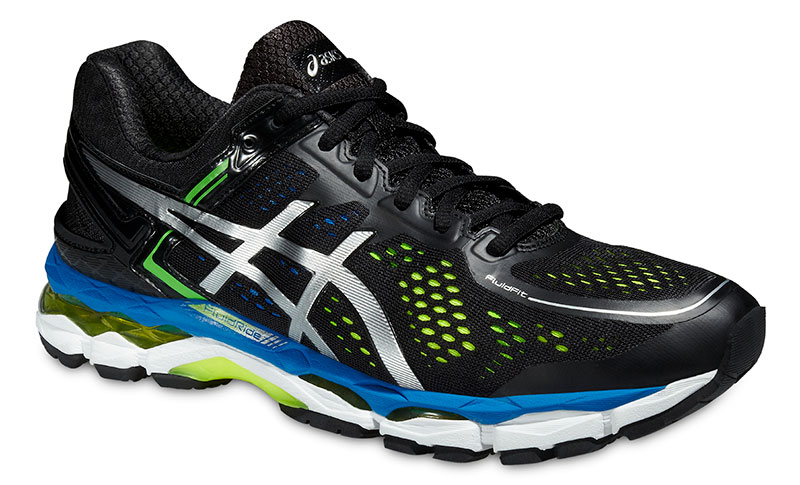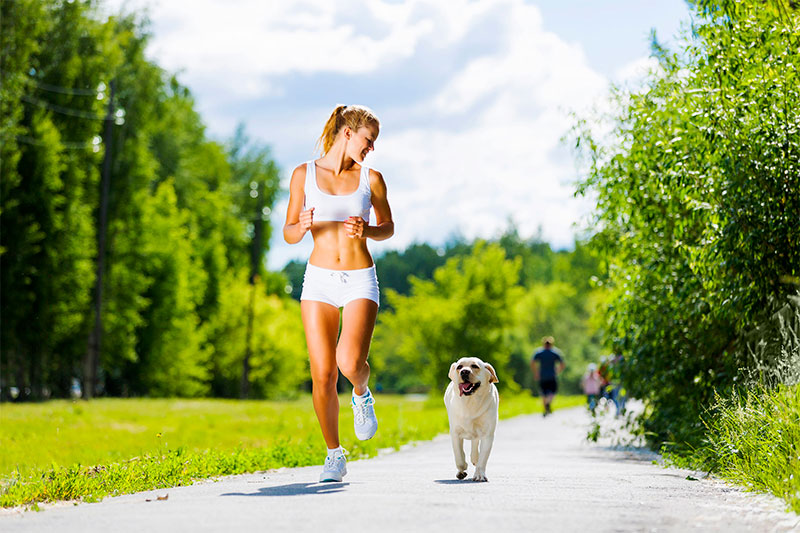Running is the most popular form of training. Everybody is running: men, women and children. But in order to benefit from the classes, and not to injure the legs, it is necessary to choose sports shoes correctly. Sneakers and universal sneakers are not suitable here - you need special models that take into account your weight, gender, foot setting, and even running technique.

Content:
The best manufacturers of sneakers - which company to choose
Sports shoes need to choose among the lines of well-known manufacturers. And not only because reputable companies value their reputation and monitor the quality of the goods produced. Serious brands themselves are engaged in the development of shoes, study the load that athletes experience during training, and even create new materials for the production of sneakers.
Those who are seriously involved in running and need a comfortable, ergonomic footwear, should look for their pair in the lines of the following companies:
1. Asics
2. Mizuno
3. Nike
4. Adidas
5. Saucony
In the article the best models of running shoes we considered in detail the products of these and other well-known manufacturers. But in the case of sports shoes, the choice should also be based on the individual characteristics of the person. Therefore, read the recommendations of experts to purchase was really successful.
Features running shoes

Running shoes have a number of differences from other types of sports shoes. This concerns not only the cut, but also the properties of the materials used:
1. Top - soft and flexible, with a minimum number of seams. Often has mesh inserts of nylon or polyester yarns.
2. Stiff reinforced heel for reliable heel fixation and notch reducing pressure on the Achilles tendon.
3. Coverage - a kind of "collar" for the ankle. Soft and tight, it fixes the foot well and prevents rubbing.
4. The midsole "disperses" point shock loads, performing the functions of a kind of armored belt.
5. The sole with obligatory thickening on the heel and a raised toe. It is made of soft and elastic, but durable materials that provide good adhesion to the surface.
Other elements of sneakers (tongue, lacing) do not have any fundamental differences. Like the insole, although it can be removable, non-removable, or even have a “memory effect”.
Types of running shoes
Before proceeding to the review of the main types of running shoes, consider a common classification for all models.
First of all, sneakers are selected by gender. Men and women have a different structure of the foot and the ratio of body weight to its area, because of which the pressure on the sole of the two sexes will be different.
If you do not touch on the design issues, the characteristic signs of men's running shoes are:
1. More pronounced depreciation.
2. Wide block.
3. Smaller heel area.
Women's sneakers have a lower degree of depreciation, since athletes are usually lighter than men. And to keep the Achilles tendon, the heel on such models rises a little higher.
In addition, sports shoes are divided into subspecies, depending on the running coverage. There are three groups of sneakers:
1. For running on asphalt.
2. For the gym and equipped treadmills.
3. For cross-country running.
It is better to use sneakers according to their purpose - so they will last longer, and the owner will be much more convenient.
Separation by Seasons
Summer

Summer sneakers sew from the easiest materials.The sole here is foam or silicone, the top is made mostly of mesh. In such shoes, the legs “breathe” well, and the sneakers themselves are lightweight (up to 500 g of steam). They can run not only down the street in warm weather, but also in the gym all year round.
Winter

Winter sneakers are always denser and can weigh up to 800 g. The ideal option is a Gore-tex type top membrane material with additional insulation. The sole here is thicker, made of expanded polystyrene, which protects the feet from cold and moisture. Winter models are often complemented by spikes - removable or cast. The only minus of the warmed-up sneakers is that the legs in them do not “breathe” at all, and even Gore-tex does not solve this problem.
Interseasonal

Interseason models are a cross between winter and summer. They do not get wet, they have a dense sole, and at the same time there is no ventilation here.
Training

Suitable for professional athletes and amateurs. Such models have good cushioning and slightly increased weight: a pair of sneakers stretches for 250–400 g. The wear-resistant outsole perfectly distributes the pressure of the foot, and the top is made using Fluid Fit technology from a polymer mesh.
Such sneakers are more comfortable and safe, but they are not suitable for championships because of their great weight. In addition, their sole is designed for outdoor asphalt, and not on the rubberized coating of the stadium.
Pros:
- Reliable support and protection of the foot;
- Good depreciation;
- Soft but durable outsole;
- Foot ventilation due to mesh upper.
Minuses:
- Increased weight.
For competition

This is a choice of professionals. As a rule, such sneakers are almost twice as light as training models (approximately 200–250 g), which allows you to develop a maximum speed at a distance. Here the sole is thinner and more flexible, and also has a better grip on the treadmill. Sneakers for athletics competitions have a very tight ankle grip, which is not always convenient, but effective for maintaining the speed of a runner. But the depreciation is almost absent here, so such shoes are not suitable for frequent workouts.
Pros:
- Minimum weight;
- Allow the athlete to develop high speed;
- Perfect grip on the sole;
- Hard fixation on the leg.
Minuses:
- Suitable only for professional athletes;
- Short-lived.
For cross country running

This is a special model for those who like to run on the road. Such sneakers have weight increased to 400–500 g due to some design features. Here comes the reinforced, but relatively flexible outsole with tread and tight waterproof upper.
Pros:
- Do not get wet;
- Thick outsole with good cushioning and stone protection;
- Uniform weight distribution;
- Good flexibility allows you to take descents and ascents;
- Relief tread provides maximum grip.
Minuses:
- Relatively heavy weight;
- Lack of ventilation.
Options for choosing sneakers for running

The size
Running shoes should sit tight on the foot and at the same time not squeeze it. Therefore, it is necessary to select the shoe size as accurately as possible and be sure to measure it before purchase (the figure on the sole may not correspond to reality). Ideal sneakers for you are those in which the big toe does not reach the toe of 3 mm. The margin should be about 1.5 mm on each side.
Pronation
This is an indicator of blockage and deflection of the foot at the moment of impact, when the heel comes off the ground. When jogging in people with different pronation, the load on the sole is distributed in its own way, which means that support and depreciation should be adjusted to the leg structure.
To determine the pronation and the height of the arch, you can use the simplest "wet dough." Wet your bare feet and stand flat on a thick sheet of paper for a minute. When wet prints appear, circle the outline with a felt-tip pen. Between the toe and heel, you will see an arched bend, and the width of the remaining spot at the narrowest point of this set will determine the pronation of your foot.
After the operation, it remains only to choose the correct option:
1. In case of flat-footedness, the foot collapses inward, and a wide imprint under the arch remains on the sheet. In this case, you need sneakers without arch support, otherwise you will experience discomfort while running.
2. A very narrow isthmus between the toe and heel is a sign of supination. Your foot has minimal contact with the surface, which increases the load on the legs and requires good cushioning from the sneakers. Inside a high instep support is required for a larger footprint.
3. In normal pronation, the arched arch reaches approximately the middle of the foot. Here, with natural depreciation, everything is in order, so that a special elasticity from the sole of the sneakers will not be required.
Depreciation rate
This parameter depends on the weight of the athlete and the characteristics of the distances that he runs. For thin people, enhanced depreciation is not particularly needed (an average or lightweight model will do), while complete it is simply necessary.
Also, the thickening and elastic inserts can be located in different parts of the sole:
1. At the cape - for sprinting, as well as, if necessary, to do frequent jolts at the moments of jumps.
2. On the heel - for the marathon and training runs, when the weight of the body upon landing all the time falls on the heels.
Outsole material
Running sneakers should bend well enough, especially if it is a model in which you have to run along the street or rough terrain. Ideally, shoes should be bent in the hands at an angle of 45 °, but much depends on the material of the sole. He also determines the cost, the degree of depreciation and the "tenacity" of sneakers.
The following sole materials are available on the market:
1. Rubber - the most common option, has a low cost, but provides excellent adhesion to the surface and really bends well.
2. BRS 1000 is a hard synthetic rubber resistant to abrasion. Usually used on selected areas of the sole.
3. DRC rubber compound is a non-killing material that is suitable for all types of tracks.
4. Duralon is a lightweight porous rubber that does not have high wear resistance, but provides excellent flexibility and shock absorption.
Top material
Each manufacturer tries to improve its product from different materials. But the most popular and convenient are the following types of them:
1. Genuine leather is durable and supple, but legs in leather shoes “breathe” badly. It is rather an option for the off season.
2. Synthetic leather is stronger and lighter than natural, but lacks flexibility.
3. Nylon or PE mesh - not the main, but the most common material for summer sneakers and inserts in lightweight models. Differs in sufficient durability and provides optimum ventilation of footwear.
4. Gore-tex (Gorteks) - a three-layer material with a fluoroplastic membrane located between the fabric top and the insulating lining. "Winter" option, which allows the feet to not freeze, but at the same time providing minimal air exchange.
What sneakers to choose

1. If you just decided to run for yourself, choose training sneakers with a thickened and well-absorbed heel. Mesh inserts even in the "autumn" models will make sports more comfortable.
2. Professional athletes who are constantly participating in competitions will additionally need a lightweight pair of sneakers with maximum foot fixation.
3. Fans of winter runs on the street is better to choose a good insulated model from Gorteks on a thick sole with a tread and spikes.
4. Residents of villages on the periphery and those who fundamentally choose dirt roads for running need sneakers of average weight on a thick, but very flexible sole with a bent nose and a powerful tread.Also here you need good shock absorption and reliable foot coverage, otherwise dislocation is unavoidable.
5. If you are driving overweight, take sneakers with maximum shock absorption. So you will reduce the load on the lower leg and knee, facilitate the work of the foot, and you will get less tired, which means you will be able to run longer.
The cost of running shoes

1. Training models can be purchased in the range of 2500-40000 rubles.
2. Professional shoes for running competitions will cost about 10-25 thousand.
3. For a winter couple, get ready to give at least 5,000–10,000 rubles.
4. Approximately the same will cost sneakers for cross-country running, only the lower threshold here is set at 2,000.
It will be interesting to friends too







